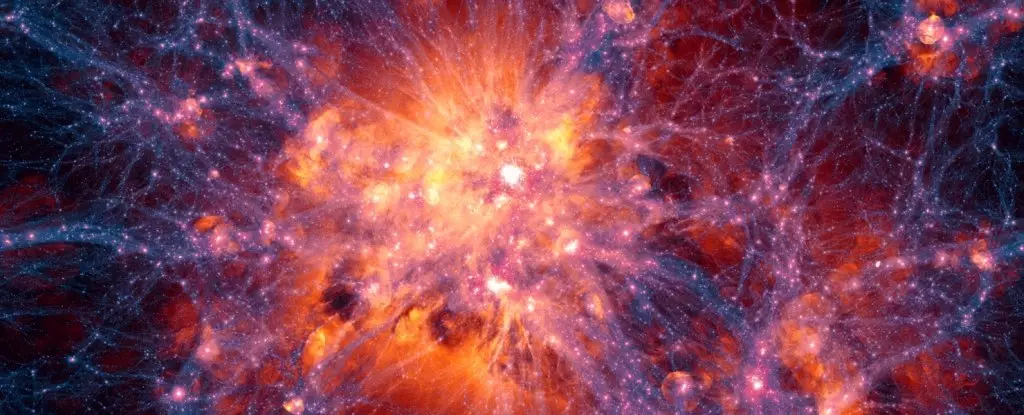In the realm of contemporary physics, few theories have stood the test of time and scrutiny like Albert Einstein’s general relativity. This monumental framework, which fundamentally reshaped our understanding of gravity, continues to flourish in the face of modern astronomical investigations. A recent endeavor has significantly expanded our grasp of cosmic phenomena, as an international consortium of astronomers undertook an ambitious project to analyze the distribution of nearly 6 million galaxies over an extensive period of 11 billion years. The findings of this monumental study not only uphold the predictions of general relativity but weave a narrative about the universe’s intricate structure.
The monumental study presents findings that align perfectly with Einstein’s assertions about gravity and the fabric of the universe. The cosmic web—a vast structure of galaxies and dark matter—exemplifies how gravity orchestrates the placement of galaxies. This network of matter reveals how celestial bodies are influenced by gravitational pulls while simultaneously grappling with the universe’s perpetual expansion. Astronomers have meticulously tracked how gravity shapes these galaxies, demonstrating that the principles of general relativity apply consistently across time and distance. This thorough examination comprises one of the largest tests of the theory, stretching across virtually the entire 13.8 billion-year history of the universe.
Amidst these groundbreaking revelations, cosmologist Pauline Zarrouk from the French National Center for Scientific Research has aptly pointed out that while general relativity has been robustly tested within the solar system, the universe’s broader scales offered a distinct challenge. The ability to observe how galaxies evolved and formed over such extensive periods allows researchers to gauge the fidelity of Einstein’s concepts in a much more complex environment, further supporting the theory’s predictions.
At the heart of this examination is the Dark Energy Spectroscopic Instrument (DESI), spearheaded by the Lawrence Berkeley National Laboratory. This colossal collaborative initiative aims to untangle substantial mysteries surrounding the origins and structures of the universe. Since becoming operational in 2019, DESI has embarked on a meticulous journey to survey 5.7 million galaxies and quasars, exploring their growth and placement across time. The initial analyses utilize the data collected in the instrument’s first year, marking a pivotal moment in cosmic exploration.
Exploring the cosmic web has profound implications not only for our understanding of gravity but also for the uncharted territories of dark matter and dark energy. The discoveries surrounding these elusive components are paramount, as dark matter constitutes about a quarter of the universe, while a staggering 70% is attributed to dark energy. The nature and interactions of these mysterious forces remain one of the most formidable challenges in modern astrophysics. Thus, the current research provides a stepping stone toward addressing these unanswered questions.
The team’s findings are particularly significant as they introduce constraints on the upper mass limits of neutrinos—subatomic particles that have long defied precise measurement due to their elusive characteristics. With the ongoing survey, the collaboration expects to accumulate data on over 40 million galaxies and quasars, further unraveling the intricate tapestry of cosmic structures.
As researchers excite the scientific community with their preliminary findings, they underscore that this undertaking is merely a prelude to more pioneering statistics and discoveries. Physicist Dragan Huterer from the University of Michigan has noted that the current exploration of cosmic structure through DESI is a pioneering leap into refining our understanding of modified gravity and dark energy models. The journey into the cosmos remains extensive and exhilarating, promising to illuminate areas of inquiry that may transform foundational physics.
This monumental study not only substantiates Albert Einstein’s enduring legacy but also elevates our comprehension of the universe’s grand design. The persistent endeavor to test and probe the boundaries of these established theories supports the notion that while we may have mapped out much of our cosmic neighborhood, the exploration of the universe is only just beginning. The findings, currently awaiting peer review, herald an exciting chapter in the story of humanity’s quest for knowledge about the universe, beckoning us to reach for the deeper truths that lie beyond the stars.

